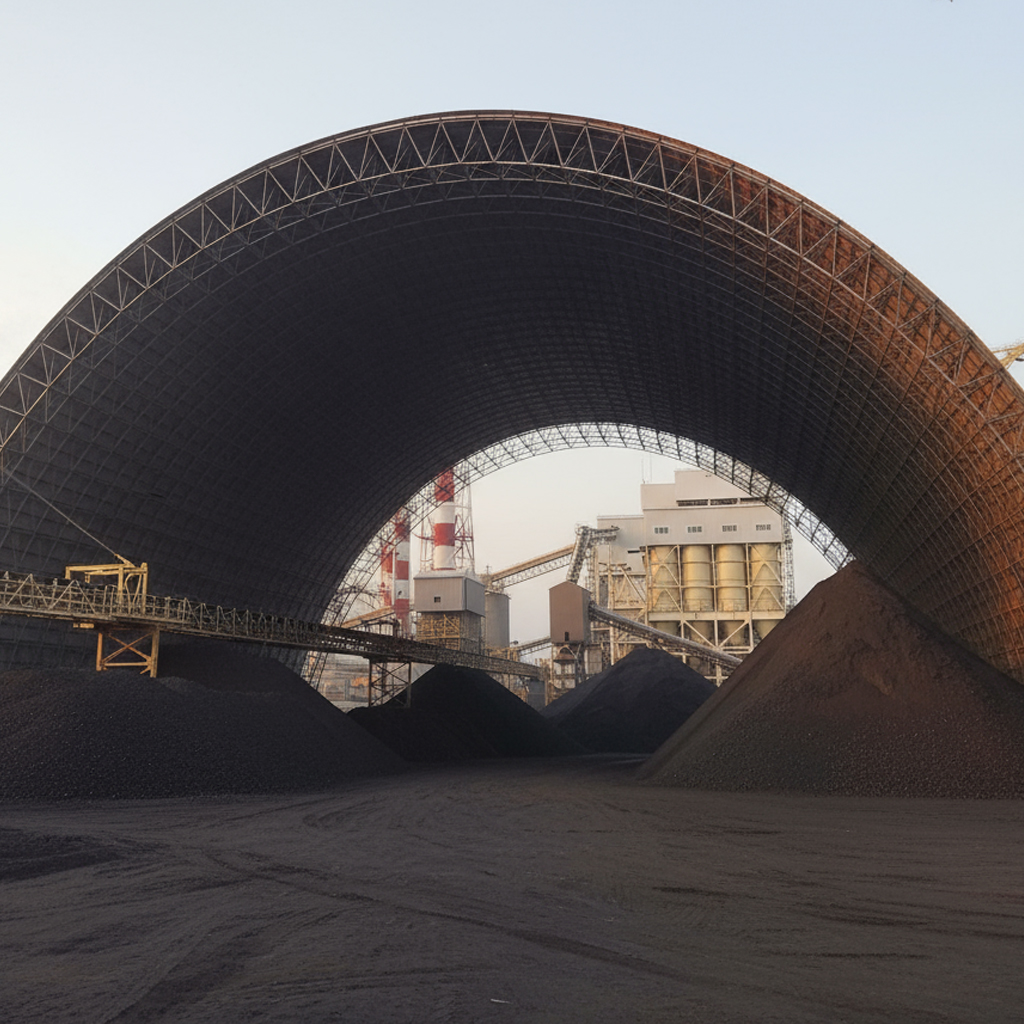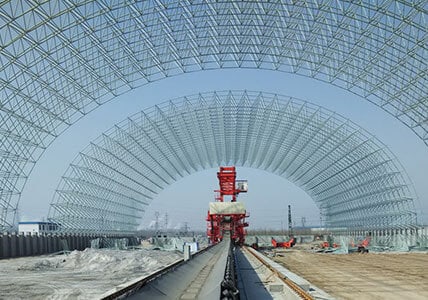Gypsum storage:
Finely grinded form of calcium sulphate / CuSo4.2H2O material industrially used for enhancing adhesive strength of the cement, called as gypsum. Gypsum Storage at large scale is needed since it is one of the prime resources in the cement industry. In purpose to improve cement’s inherit qualities, performance and efficiency, a composite gypsum storage solution needs to be followed systematically:
Gypsum Handling System:
Gypsum handling includes bunkering of gypsum, along with its stacking & reclaiming in a very cautious way. Large Stackers are used to form two different patterns- ‘cone’ , ‘chevron’ either on one or both sides of stacker. Stacking & reclaiming of coal is not only limited to avoid risks (such as spontaneous combustion, self oxidation, caking problem) to coal stockpiles but it must be carried out in such a way to keep coal effective. Gypsum is usually stored under well-constructed sheds ensuring its storage without deterioration and without contact to ground and structural members, without exposure to moisture and heat, and away from direct sun.
For environmental friendly gypsum storage and production of an best outcome in cement industry, today almost all out-performing cement plants use to store gypsum stockpiles under a strong, durable, eco-friendly and solution-rich gypsum storage shed and gypsum dome.
Role of Gypsum Storage System in FGD:
The resources like coal, petcoke, limestone contain a significant amount of sulphur into them. In many large scale power plants and cement plant (where the resource is Coal, petcoke, limestone etc), the problems arises from boiler or furnace where large volumes of So2 accumulation not only deteriorates air quality of environment but also highly corrosive for handling equipments like stacks, fans etc.
In order to extract So2 from flue gas, the mechanism of extraction employed is known as FGD or Flue Gas Desulphurization. In Flue Gas Desulphurization, the chemical Techniques are used to exclude sulphur di-oxide (So2) in exhausted flue gasses from the Furnace/boiler. Some of the Chemical techniques used for FGD are ‘Wet Scrubing’, ‘Dry Scrubing’, ‘SNOX FGD’ etc.
The output from flue gas de-sulphurization is synthetic gypsum, which is carried out under FGD shed. For cement manufacturing, this FGD storage product or synthetic gypsum is supplied in crushed form for further fine grinding with cement clinker and has many other commercial applications in cement industry, bricks manufacturing etc.




